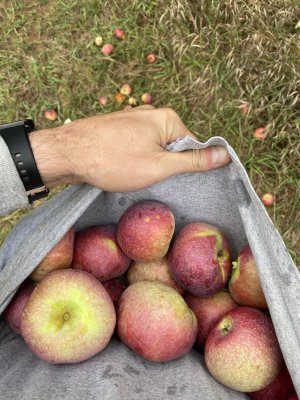The U.S. Drought Monitor has had our area rated as under Severe Drought or Exceptional Drought for most of this summer, plus our soil is very sandy to begin with. I spent most of the day walking around orchards. I have listed below, grouped by rootstock, what I perceived as the average conditions of the apple tree whips under six feet tall that I observed today and that had not received any supplemental watering. I put ballpark sample sizes in parentheses for each grouping.
- B118 (about ten of them) – Most survived, but on all those that survived, the trees died back to the graft unions.
- M111 (a few dozen of them) – Quite a few dead, and most of the alive ones died back to just a few leaves or shoots above the graft union.
- Standard (about a hundred of them) – Quite a few dead and just small leaves on most of the survivors. No new growth.
- Antonovka (about a dozen of them) – All survived, but didn’t put on new growth.
- Dolgo seedling (a few hundred of them) – Nearly all survived and most put on a modest amount of new growth.
- Whips on DIY rootstock (about a dozen and a half of them) that had been DIY stooled from trunk suckers and root suckers of a couple older Dolgo seeding trees that are vigor standouts on this soil – They thrived in the drought, just like the parent trees did.

